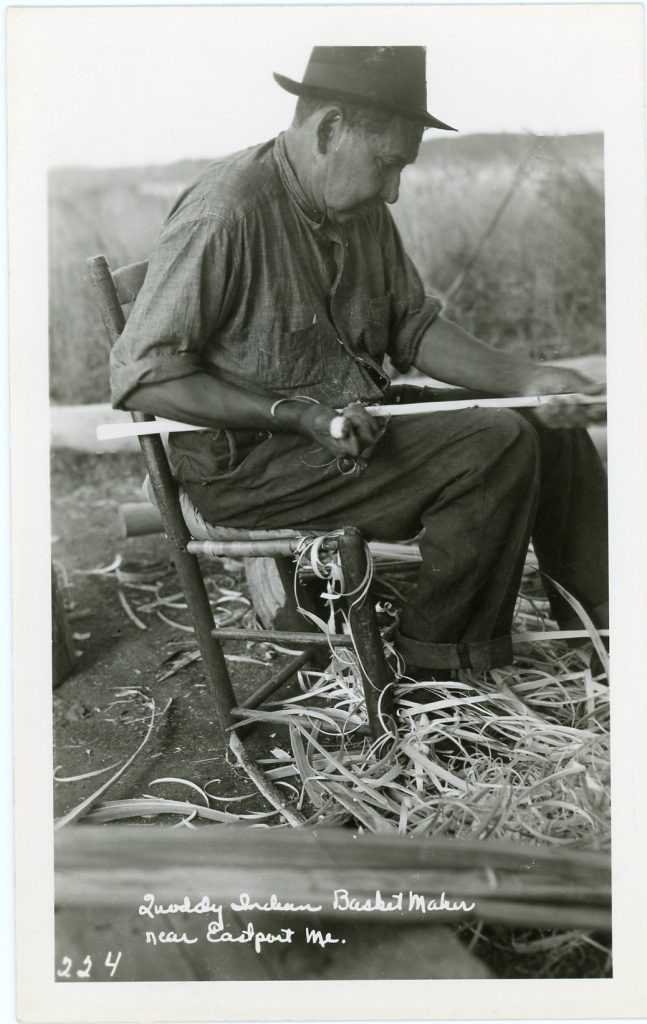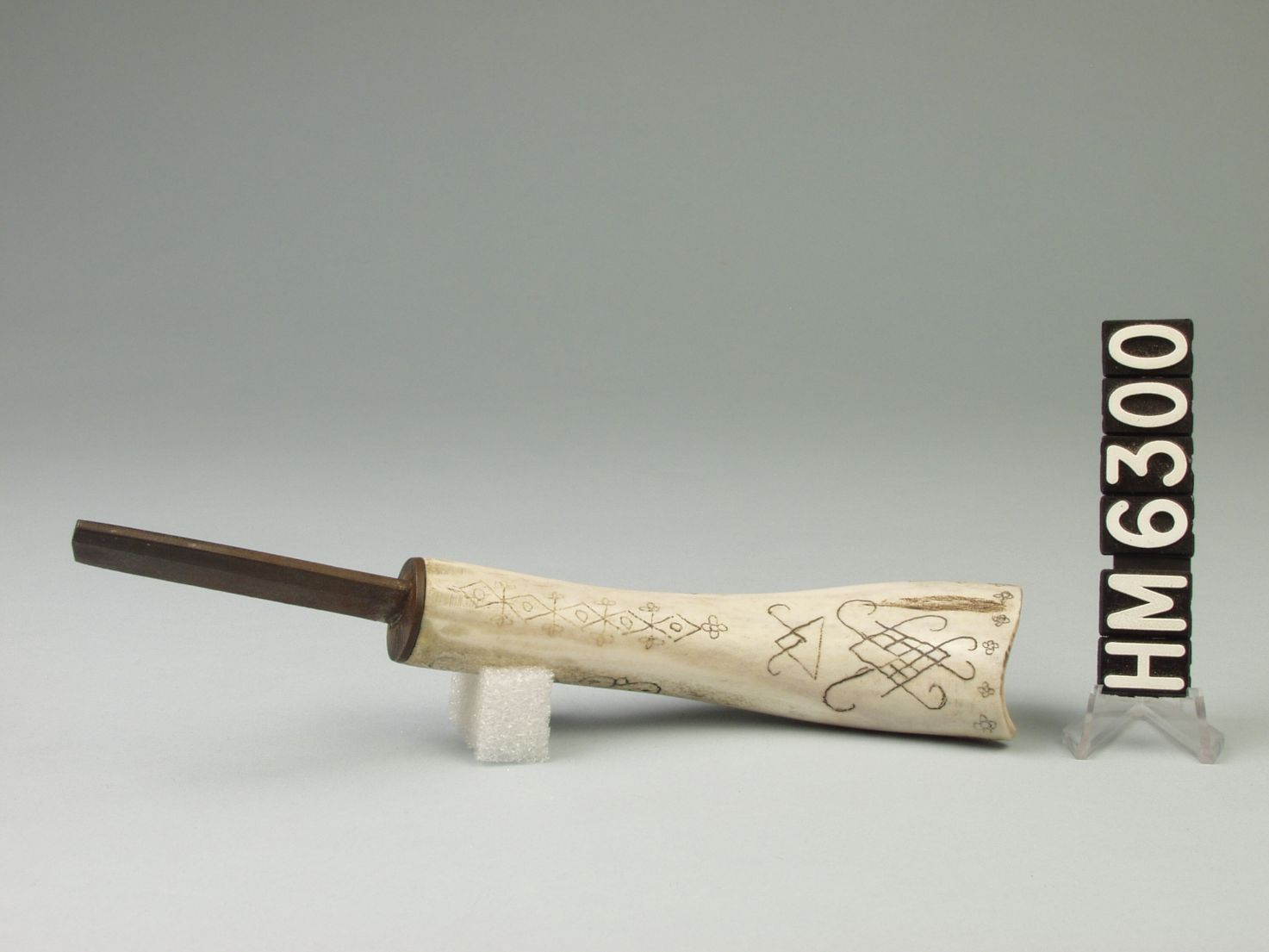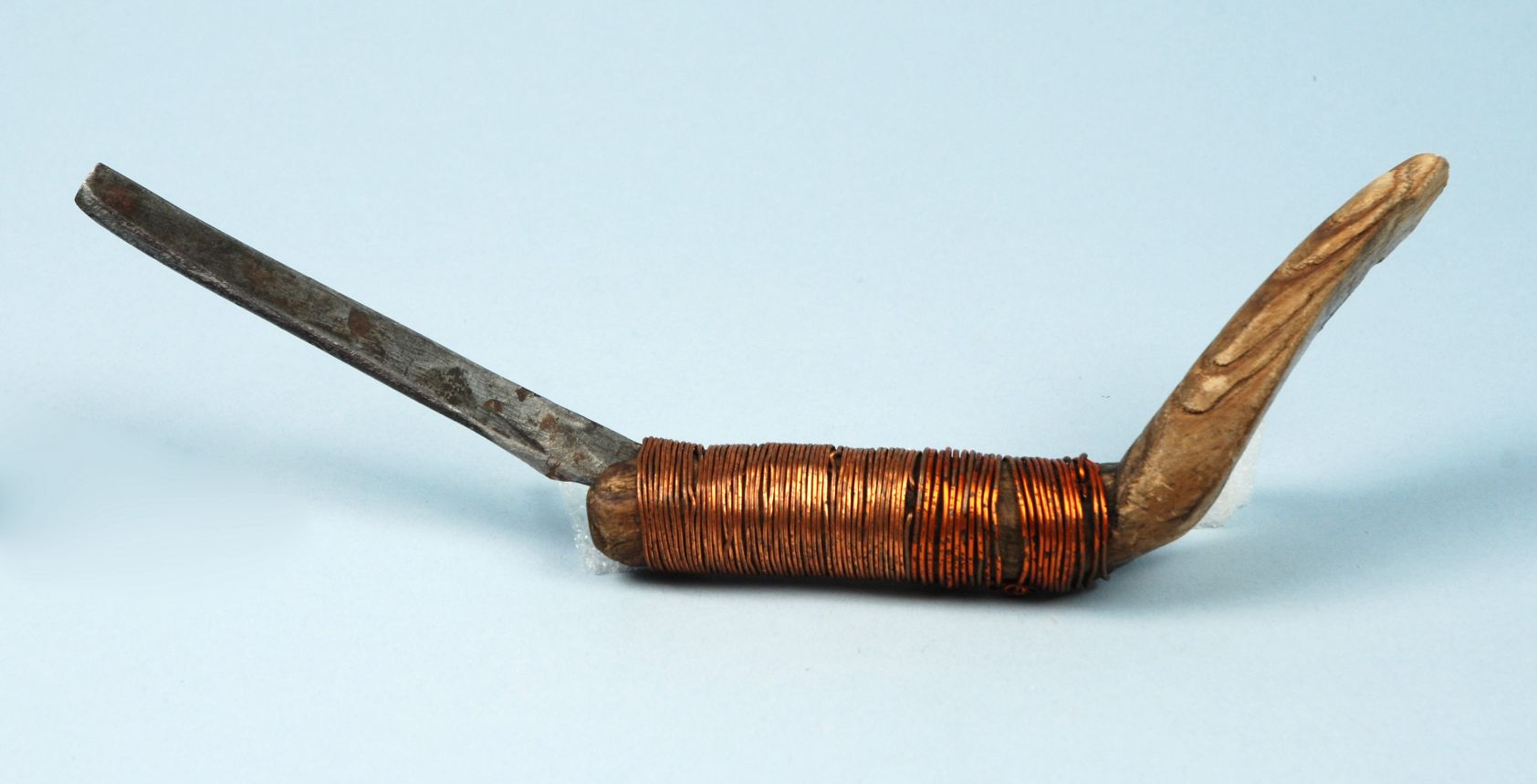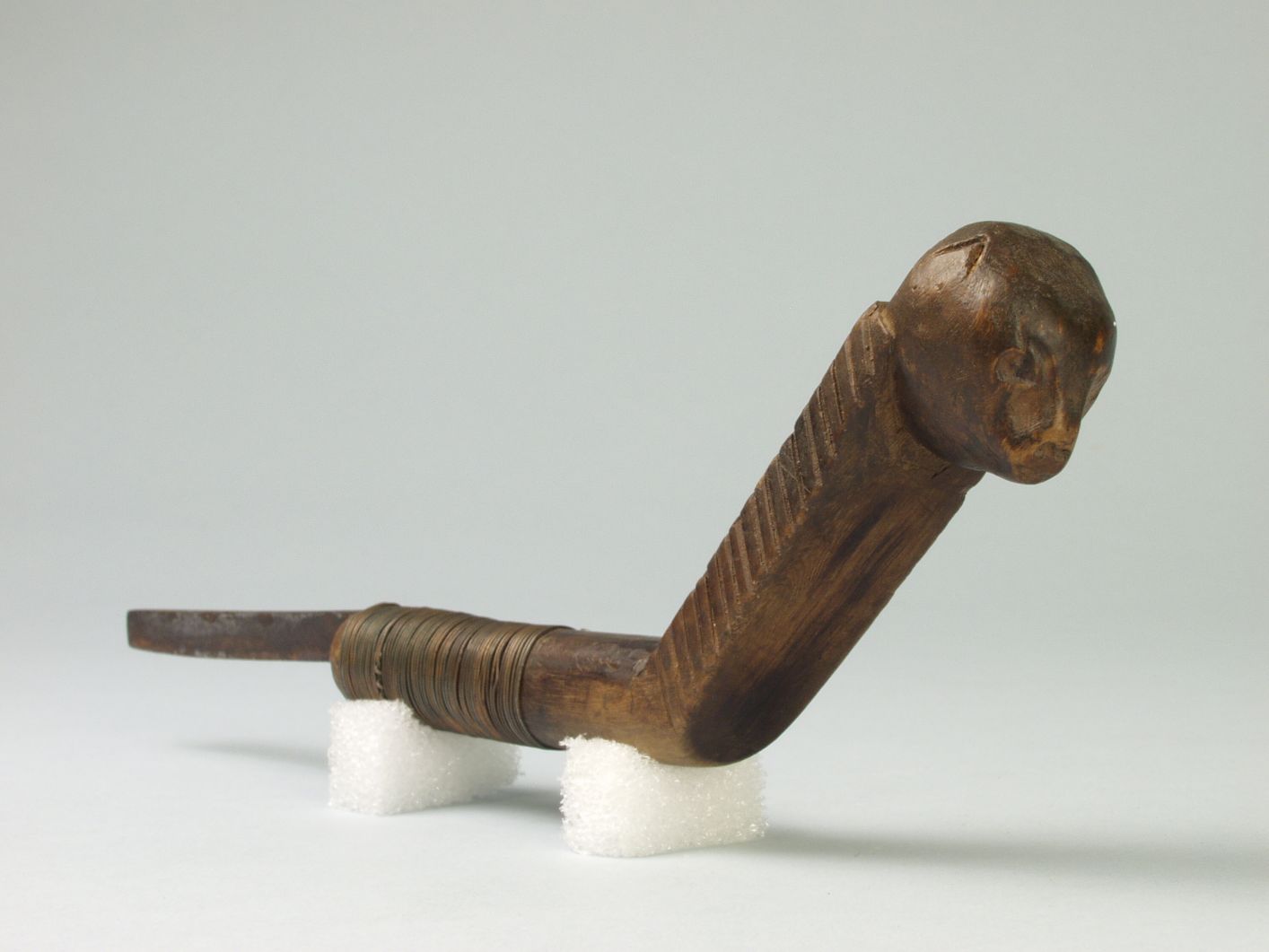Hudson Museum Scavenger Hunt: Wabanaki Crooked Knives
Who made them?
Crooked knives are one-handed draw knives developed by the Native Peoples of the Northeast to shape wood.
What were they made of
The handles were made of wood or antler.
Pre-contact knives used beaver or porcupine incisors which created a natural curved blade. After contact, flat steel files, farriers’ knives, or straight razors were used for blades.
The blade was secured to the handle with sinew lashing, pitched string, wrapped wire, or a metal sleeve.
What were they used for?
They were designed to shape wooden objects such as baskets, axe handles, canoe frames, paddles, clubs, snowshoe frames, bowls, dishes, etc.
Because of their utility they were adopted by Franco-American, Franco, Anglo-Canadian, and Scandinavian woodsmen and are still used today.
Artists use them to make wooden carvings, ax handles, waterfowl decoys, and more!

To find the next code:
Head back toward the entrance to the Wabanaki Gallery. Face the World Cultures exhibits, look for a warm looking coat, and head towards it. Look in the same exhibit as the coat, and try to find a pair of very small shoes. You can scan the QR code when you find them, or click here to continue.



